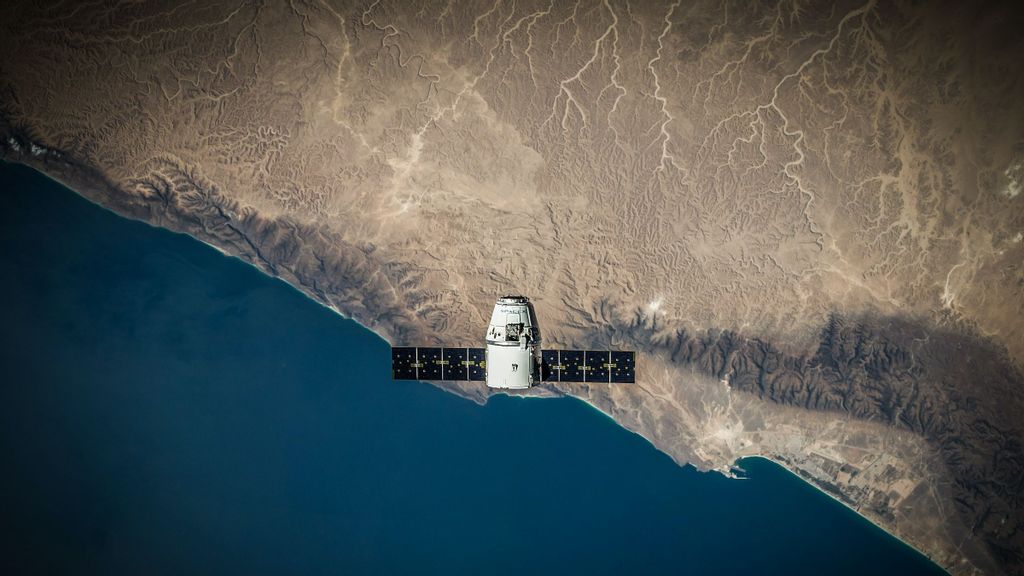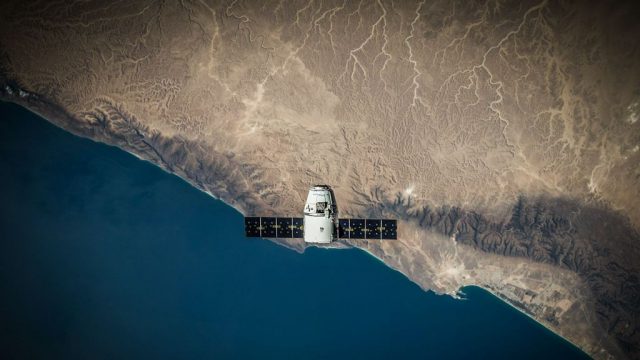
By
Space is getting crowded.
In addition to the thousands of satellites already orbiting Earth, about 14,000 new satellites are expected to be launched by the end of the decade.
That translates into about 9,000 tons of space debris, says Igal Kronhaus, Technion professor-turned-space-tech startup entrepreneur.
It’s gotten so bad that the United States issued new regulations in 2022 that “won’t allow the launch of a satellite unless it has a convincing capability to move out of the way after five years from the end of the mission,” Kronhaus says.
Dr. Igal Kronhaus, cofounder of Space Plasmatics. Photo courtesy of Space Plasmatics
Kronhaus started his company, Space Plasmatics, in 2021 to address the space junk problem while also improving satellite propulsion in general.
Space Plasmatics is developing plasma thrusters designed to navigate satellites to a different orbit or even back to Earth, using ionized gas in an electric field rather than the traditional propulsion method of chemical reactions.
The thrusters get their power from solar cells that are already mounted on the satellites. Solar-powered electric propulsion is now used in almost every satellite. High-powered versions could even propel manned spacecraft for missions to the Moon and Mars.
Electric propulsion was originally conceived in the 1950s as a way to get people to Mars – long before Elon Musk popularized the concept for the 21st century.
“Back then, there were no envisioned applications, other than human space travel,” Kronhaus tells ISRAEL21c.
Now, with satellites handling everything from GPS navigation to cell phone communication to spying on enemy nations, the use case has arrived.

Space hardware
Kronhaus was an assistant professor of aerospace engineering at the Technion for seven years. The technology for Space Plasmatics, he says, has been “incubating in my lab for the past decade.”
“It’s very unusual for a professor to start a company,” Kronhaus says. “I’m paving a unique path here.”
Space Plasmatics cofounder Andrew Pearlman. Photo courtesy of Space Plasmatics
Space Plasmatics cofounder Andrew Pearlman is a serial entrepreneur who has raised more than $150 million for 10 Israeli companies since his arrival here from the United States in 1981. He describes his role in Space Plasmatics as Kronhaus’s “coach, copilot and righthand man.”
“We’re exclusively space hardware,” Kronhaus says. “We can’t re-use our engines in cars or planes. We’re making a real, physical product, not just writing code. That makes it more difficult to convince investors to come in.”
But some have.
Israel Aerospace Industries (IAI) took an interest in Space Plasmatics and invited the company to participate in the Astra incubator, co-run by the accelerator Starburst and IAI. The Israel Innovation Authority has also helped fund Kronhaus’s vision.
The Knesset last year pledged to invest the shekel equivalent of $180 million in the civilian space industry over the next five years. Start-Up Nation Central estimates the worldwide space economy is worth $400 billion.
Larger satellites
In June, Kronhaus signed a deal to develop its plasma thrusters for IAI’s satellites. This deal points to a shift in the industry.
For much of the past decade, tiny nanosatellites (CubeSats), just a few tens of kilograms in weight, were assumed to be the future of the industry.
Israel excelled at these small satellites.
“It’s no secret that we can’t launch over neighboring Arab states. And we don’t build huge rockets. So, we build smaller rockets with a smaller payload that are launched in the wrong direction!” Kronhaus says.
That “wrong direction” requires more fuel, “so we have to reduce the payload we’re carrying even further.”
But now, the main market seems to be in bigger satellites that weigh several hundred kilograms, Kronhaus says. It makes economic sense – bigger satellites carry bigger payloads, which results in faster ROI.
Larger satellites are also what IAI specializes in.
The IAI arrangement is positioned as a trial to see if Space Plasmatics can scale up to IAI’s needs. Kronhaus is convinced they can and that IAI will become a paying customer.
How it works
For any rocket scientists reading this, here are a few technical details.
Kronhaus’s plasma thrusters are essentially a better version of a Hall thruster, a model developed in the former Soviet Union in the 1960s.
The thruster does need some fuel but uses nonflammable, noncombustible gases such as xenon and krypton.
“The inert gas is in the propellant tank on the satellite,” Kronhaus says. “The Hall thruster feeds a certain amount of it to the engine at a constant rate. The electric field gives the gas the energy to ionize. There’s a nice blue plasma flame as the ions are accelerated. This acceleration is what produces thrust.”
Space Plasmatics’ microHET thruster prototype. Photo courtesy of Space Plasmatics
Kronhaus says that Space Plasmatics’ tech also reduces the weight of the satellite, because normally it’s the fuel tank that contributes the most weight to the device.
Hall thrusters, however, are not for every space application. Landing on the Moon or shooting missiles require the higher power of chemical propulsion.
Space Plasmatics is still developing its thrusters. Assuming the company continues with IAI and/or raises more money, Kronhaus and Pearlman say a full working version of the company’s product should be ready by Q2 2025.

Competition
Space Plasmatics has plenty of competitors: Austria-based Enpulsion; Thrustme and Exotrail from France; Astra and Rafael from Israel.
However, Kronhaus is banking on Space Plasmatics’ high thrust and high fuel economy. “We improve the performance of a Hall engine at low power,” he says.
It doesn’t hurt that Kronhaus has a PhD in electric propulsion and is considered an expert in the field – in Israel and beyond.
Will Kronhaus’s technology and Pearlman’s business savvy be enough for this four-person company in Haifa to make a dent in the space-tech space? We’ll be watching.
Produced in association with ISRAEL21c




